Thomas Allom
Pakistan - Punjab, Sikh Irregular Cavalry, 1840
A hand-coloured original steel-engraving
6 ½ x 8 ½ in
16 x 22 cm
16 x 22 cm
INDp1713
Punjab: Arrival of the Sikh Irregular Cavalry At the age of fourteen Thomas Allom, the son of a coachman, was apprenticed to the London architect Francis Goodwin, later attending the...
Punjab: Arrival of the Sikh Irregular Cavalry
At the age of fourteen Thomas Allom, the son of a coachman, was apprenticed to the London architect Francis Goodwin, later attending the Royal Academy Schools and benefiting from the tutelage of Sir John Soane and J.M.W. Turner. His church designs exhibited in 1824 and 1827 elicited great interest and soon he was in private practice; he became a founding member of the Institute of British Architects (later RIBA) in 1834 and formed a partnership with Henry Lockwood in Hull.
Allom’s exhibitions at the Society of British Artists and the Royal Academy from the early 1820’s brought him to the attention of various publishers; the commissions he received over the next twenty years substantially supplemented his income and allowed him to travel extensively in Britain, Europe, the Near and Far East producing fine illustrations for numerous publications.
After 1843, when the partnership with Lockwood was dissolved, he returned to independent practice designing numerous buildings in London to include Stanley Crescent and St Peter’s Notting Hill and Christchurch Highbury. Most notably Allom worked with Sir Charles Barry at Highclere and the Houses of Parliament. Allom was commissioned by Barry to paint two large watercolours of the new Houses of Parliament for presentation to Emperor Nicholas I during his visit in 1844.
Allom continued to work until his death; he completed Holy Trinity Barnes in 1868 and held his last exhibition in 1871. His work is remembered for its unique vigour, clarity and accuracy.
At the age of fourteen Thomas Allom, the son of a coachman, was apprenticed to the London architect Francis Goodwin, later attending the Royal Academy Schools and benefiting from the tutelage of Sir John Soane and J.M.W. Turner. His church designs exhibited in 1824 and 1827 elicited great interest and soon he was in private practice; he became a founding member of the Institute of British Architects (later RIBA) in 1834 and formed a partnership with Henry Lockwood in Hull.
Allom’s exhibitions at the Society of British Artists and the Royal Academy from the early 1820’s brought him to the attention of various publishers; the commissions he received over the next twenty years substantially supplemented his income and allowed him to travel extensively in Britain, Europe, the Near and Far East producing fine illustrations for numerous publications.
After 1843, when the partnership with Lockwood was dissolved, he returned to independent practice designing numerous buildings in London to include Stanley Crescent and St Peter’s Notting Hill and Christchurch Highbury. Most notably Allom worked with Sir Charles Barry at Highclere and the Houses of Parliament. Allom was commissioned by Barry to paint two large watercolours of the new Houses of Parliament for presentation to Emperor Nicholas I during his visit in 1844.
Allom continued to work until his death; he completed Holy Trinity Barnes in 1868 and held his last exhibition in 1871. His work is remembered for its unique vigour, clarity and accuracy.
Join our mailing list
* denotes required fields
We will process the personal data you have supplied to communicate with you in accordance with our Privacy Policy. You can unsubscribe or change your preferences at any time by clicking the link in our emails.


